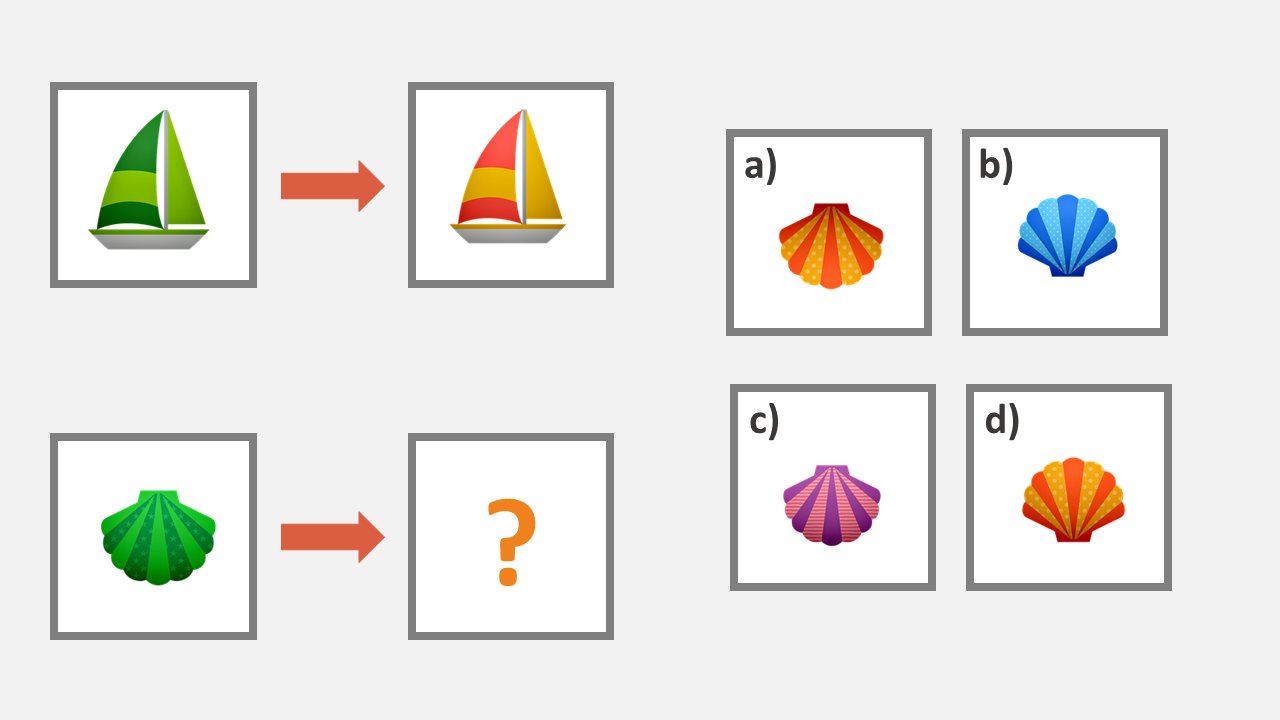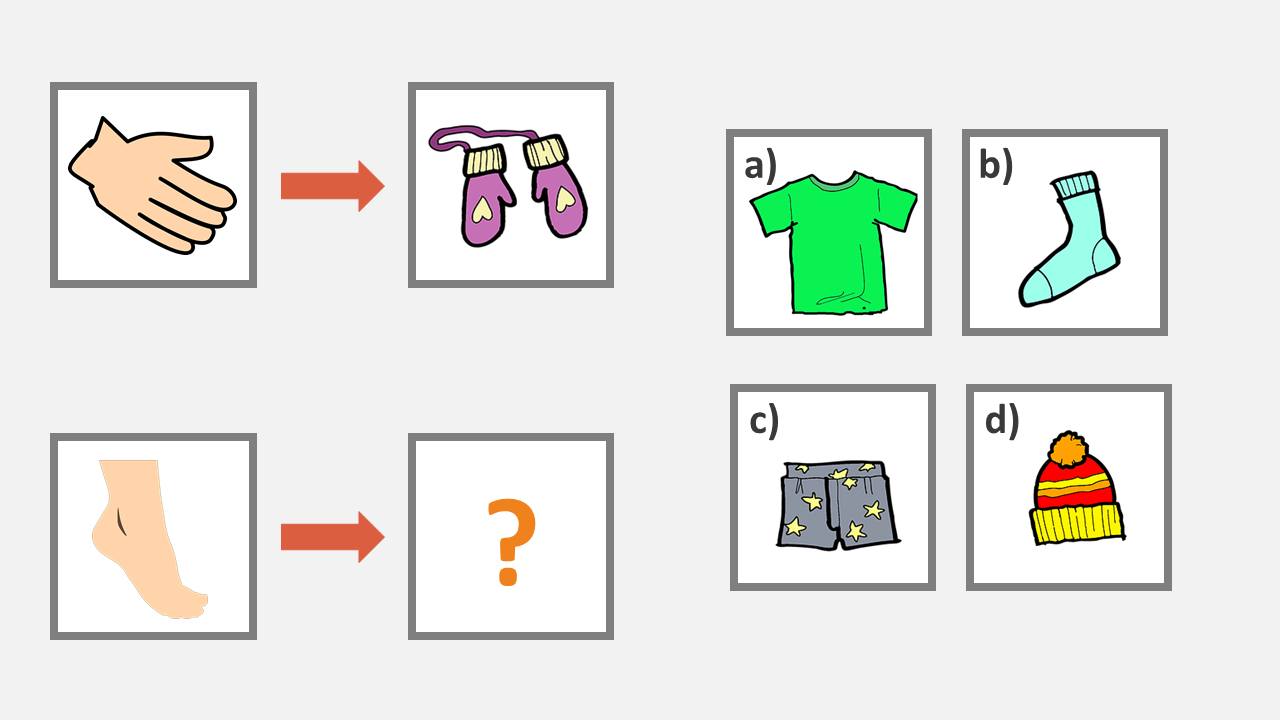How to Pass the CogAT Test: Grade 2 in 2025
Updated June 20, 2025
The CogAT 2nd Grade Test is an assessment given to 2nd graders that tests their cognitive and reasoning skills.
What Is the CogAT Test 2nd Grade?
The CogAT (abbreviation for Cognitive Abilities Test) is an assessment that measures the skills of children and young people in three key areas:
Schools across the US use CogAT tests to measure academic ability and to identify particularly gifted students.
Students will usually encounter the CogAT 2nd grade test while they are studying in the 2nd grade at elementary school.
The main difference 2nd graders will encounter when comparing this test to one they may have previously done is that they will be required to read the questions. Children in the lower grades are able to listen to the questions.
How Is the CoGAT Grade 2 Structured?
The 2nd Grade CogAT Test will usually be the level 8 test.
The questions on the test at the 2nd grade level will be aimed at their age group and include simple mathematical equations (addition, subtraction, multiplication and spotting patterns) and basic linguistic skills such as spelling, punctuation, sentence structure and basic classification skills.
The 2nd grade CogAT assessment has 154 questions and students have 122 minutes to answer them all.
Verbal Section
The verbal section tests a child’s reading and understanding of words and sentences in English and their ability to:
- Memorize
- Make judgements
- Make inferences
Quantitative Section
The quantitative section tests a child's knowledge of:
- Basic numerical concepts
- Relationships between numbers
Non-Verbal Section
Using pictures, icons and shapes, the non-verbal section measures:
- Reasoning
- Understanding links (and, to an extent, logic)
Some students may find having to read the questions provides added pressure. The non-verbal battery eases this to a degree, as language skills are not the primary focus here (although some reading is still involved to ascertain what is being asked of the student).
Question Examples of the CoGAT 2nd Grade Test
Quantitative Battery
Quantitative Relations
1. Which number should replace the symbol?
a) 4
b) 10
c) 5
d) 2
e) 12
Tip: Rephrase this to your child by asking: Which number replaces the X to make the equations equal, so the left one is the same as the right one?
1. Which number is missing from the series here:
7, 10, ?, 16, 19
a) 11
b) 15
c) 13
d) 12
e) 21
If you want 12-month access to all the practice resources for this test, our partner TestPrep-Online.com offers a Family Membership.
Family Membership gives you access to all the TestPrep-Online resources for the next 12 months. You will also get two separate accounts, which can be very helpful if you have two children preparing for their tests.
Get a Family Membership with 12-month access
1. Apple, orange, banana, ?
Choose the word from the following that makes the most sense to go where the ? is:
a) Green
b) Pink
c) Maize
d) Blue
e) Pineapple

1. Which word is missing from the following sentence?
Leaves ______ down in October.
a) Grow
b) shoot
c) Blossom
d) Fall
e) Twist
1. 'Cat' is to 'kitten' as 'cow' is to:
a) Baby
b) Pig
c) Calf
d) Bull
e) Piglet
Non-Verbal Battery
This section contains questions that look at how different pictures or symbols relate to one another.

1. Which symbol from the selection on the right-hand side best fits in the missing space on the left?

2. The item on the right relates to the item on the left. Which item fits best in the missing square?
Tips to Ace the CoGAT Test: 2nd Grade
Step 1. Brush Up on Your IT Skills
Tests are usually administered online, although you may want to check this with your child’s school.
As digital natives, 2nd graders will likely be familiar with how to navigate their way around a computer.
If your child lacks basic IT skills, it is useful when preparing them for the CogAT 2nd Grade test, to explain how to use a mouse, where to click on the screen, etc.
Step 2. Take Practice Tests Online
Do not simply sit your child in front of the computer and expect them to find the answers; if they are struggling, you could rephrase the questions to them, as they may not appear in exactly the same way on the real exam as they do on the practice papers. This can help them to build their understanding and confidence.
Practice questions are available online and full test-packs of sample questions similar to those your child may get on their 2nd Grade CogAT test are available to purchase.
If you decide to buy a preparatory test online, some sites will also provide you with a study guide aimed at the child taking the test and a parent manual, in addition to the practice questions and full-length practice tests.
Make use of these resources by ensuring that your child studies the guide as well as takes the preparatory tests. Also make sure that you read the manual, so you can support your child as much as possible in their learning journey.
Step 3. Build a Routine So Your Child Knows What to Expect
Practice for the same amount of time each day and at roughly the same time (morning or evening). This can help to sustain your child’s interest and motivation.
Check in with their teacher if necessary to ask for tips or details about how your child works in the classroom. This insight might help you to find new strategies that help them learn more effectively.
As your child practices for the test, make sure that they take regular breaks and time to reflect. They may be struggling in particular areas or getting bored.
It is not uncommon for children to struggle with understanding exactly what the question is asking. As they practice more, they should get familiar with the structure and phrasing of the questions.
Encourage your child to spend time focusing on the areas they find difficult rather than playing only to their strengths.
Step 4. Get Enough Rest and Eat Healthily
Ensure that your child gets enough rest and is eating healthily and staying hydrated. A balanced diet and plenty of sleep will help to keep your child healthy, energetic and ready to learn.
Read widely with your child (try to build this into your learning routine, if possible) and pause during reading to ask questions that check their comprehension and that they are paying attention.
Children who are feeling anxious or stressed will be less able to retain information and are unlikely to perform at their best.
Maintain a calm environment at home to help your child to study. Praise their successes and encourage them to retry any parts they find difficult; practicing for the assessment is a process and it is not something that will go perfectly first time, if ever.
Practice CogAT 2nd Grade Test with Test Prep Online
How to Prepare for CogAT Test 2nd Grade
Step 1. Understand the Test Format
Familiarize yourself with the sections and question types of the CogAT for 2nd grade.
It consists of three sections: Verbal, Quantitative and Non-Verbal.
Each section assesses different cognitive abilities.
Step 2. Practice Sample Questions
Look for CogAT practice materials specifically designed for 2nd grade.
Practice with sample questions to help your child become familiar with the test format and types of questions they may encounter.
Step 3. Focus on Reasoning Skills
The CogAT assesses a child's cognitive abilities, such as reasoning, problem-solving and critical thinking.
Engage your child in activities that promote these skills, such as puzzles, brain teasers and logical reasoning exercises.
Step 4. Enhance Verbal Skills
Help your child improve their verbal abilities by encouraging reading, storytelling and engaging in conversations.
Expand their vocabulary, work on comprehension skills and encourage them to express their thoughts and ideas verbally.
Step 5. Strengthen Math Skills
Practice basic math concepts, including addition, subtraction, multiplication and division.
Introduce your child to word problems and logical reasoning puzzles to enhance their quantitative reasoning abilities.
Step 6. Develop Spatial Awareness
Engage your child in activities that develop spatial awareness and visual-spatial skills.
These can include building with blocks, solving spatial puzzles, drawing shapes and identifying patterns and relationships between objects.
Step 7. Time Management Practice
The CogAT 2nd grade test is a timed test, so help your child practice managing their time effectively.
Encourage them to work efficiently, read the instructions carefully and answer questions within the given time limits.
Step 8. Encourage a Growth Mindset
Emphasize the importance of effort, perseverance and a positive attitude towards learning.
Remind your child that the CogAT is just one measure of their abilities and that their worth is not determined solely by their test performance.
Encourage them to do their best and focus on their personal growth and development.
Step 9. Communicate with Teachers
Talk to your child's teacher to understand the specific areas assessed by the CogAT and any recommended resources for preparation.
They can provide guidance and support tailored to your child's needs.
Step 10. Create a Supportive Environment
Create a stress-free and supportive environment during the preparation and test day.
Ensure your child gets enough rest, eats a healthy breakfast on the test day and approaches the test with confidence.
CoGAT practice tests for Grade 2 can be found online through reputable educational websites or by contacting your child's school. Ensure that the practice materials closely align with the content and format of the actual CoGAT test.
The difficulty of the CoGAT test for 2nd grade can vary for each student. In addition, the test is designed to assess cognitive abilities, and preparation through practice tests, familiarity with the test structure, and reinforcing key concepts covered can contribute to a better performance.
The CoGAT (Cognitive Abilities Test) for 2nd grade is designed to evaluate a child's cognitive abilities in areas such as verbal, quantitative, and nonverbal reasoning. The results help educators understand a student's strengths and areas for improvement, aiding in developing effective educational strategies.
CoGAT scores are typically reported as percentile ranks. A good score indicates that a student performed at or above the average level compared to their peers. Scores in the 90th percentile or above are generally considered excellent, while scores in the 50th percentile are considered average.
While the CoGAT assesses cognitive abilities, it is more specifically an aptitude test rather than a comprehensive IQ test. It measures a student's proficiency in specific domains like reasoning and problem-solving. It's important to understand that no single test can fully capture the complexity of intelligence.
The number of questions in the CoGAT 2nd grade test can vary. In addition, the test is typically divided into batteries, including verbal, quantitative, and nonverbal sections, each containing multiple subtests. The total number of questions may depend on the specific version of the test administered, and students are advised to manage their time effectively during the testing period.
Final Thoughts
By 2nd grade, your child is most likely still exploring their strengths and weaknesses at school and may have not fully grasped some of the concepts they are faced with in the classroom.
Some, however, may already be thriving within the formal education system and you, or their teacher, may have noticed from a young age that your child is excelling in some areas.
Regardless of natural aptitude, it pays to prepare your child for their examinations and assessments and give them the practice and encouragement that they need to fulfil their potential.
By incorporating learning in a balanced way into their daily lives, you can nurture a love for education in your children and empower them to believe in their abilities and perform at their best.
It is important to remember that, in general, cognitive tests such as the CogAT are unable to provide the full picture of a student’s abilities. They can be influenced by a number of external factors and therefore, although they can be a useful guideline, they do not provide absolute proof of a child’s academic skills and abilities.



